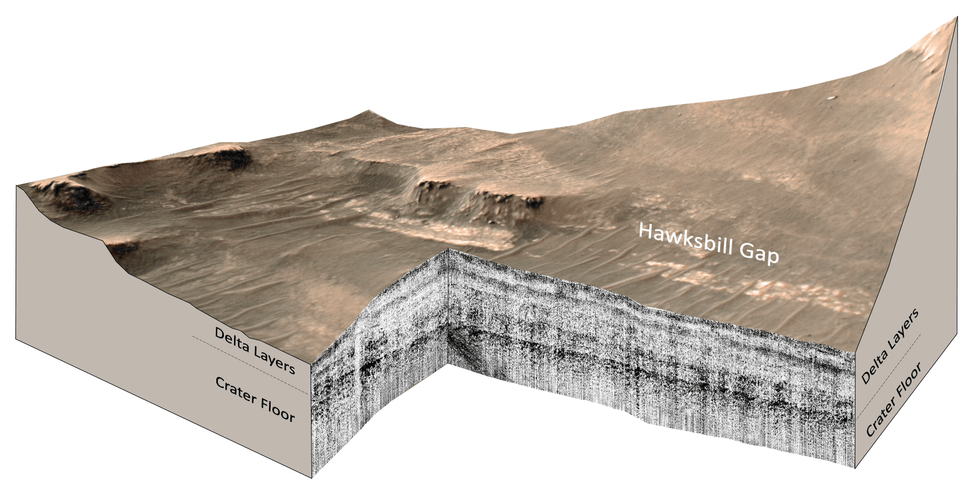Evidence of ancient lake sediments at the base of Mars’ Jezero Crater offer new hope for finding traces of life in samples collected by NASA’s Perseverance rover.
Perseverance touched down on Feb. 18, 2021 inside the Red Planet’s 28-mile-wide (45 kilometers) Jezero Crater, which is believed to have once hosted a large lake and river delta. The rover has been scouring the crater in search of signs of past life and collecting and caching dozens of samples along the way for a possible future return to Earth.
Using the rover’s Radar Imager for Mars’ Subsurface Experiment (RIMFAX) instrument, researchers from the University of California, Los Angeles (UCLA) and the University of Oslo revealed new clues about how sediment layers formed over time on the crater floor, according to a statement.
“From orbit we can see a bunch of different deposits, but we can’t tell for sure if what we’re seeing is their original state, or if we’re seeing the conclusion of a long geological story,” David Paige, first author of the study, RIMFAX’s deputy principal investigator and UCLA professor, said in the statement. “To tell how these things formed, we need to see below the surface.”
Related: Strange underground polygons on Mars hint at Red Planet’s wet past
As Perseverance travels across the surface of Mars, the RIMFAX instrument sends radar waves downward at 4-inch (10-centimeter) intervals and measures pulses reflected from depths of about 65.6 feet (20 meters) below the surface to create a subsurface profile of the crater floor.
The RIMFAX data showed evidence of sediment deposited by water that once filled the crater. It’s possible that microbial life could have lived in the crater at this time and, if such life existed on Mars, sediment samples from this area would contain signs of their remains.
Two distinct periods of deposition occurred, creating layers of sediments on the crater floor that appear regular and horizontal, much like strata layers seen on Earth. Fluctuations in the lake’s water levels caused some of the sediment deposits to form an enormous delta, which Perseverance traversed between May and December 2022, according to the statement.

The radar measurements also show an uneven crater floor below the delta, which is likely due to erosion before sediments were first deposited. After, as the lake dried up over time, the sediment layers in the crater were eroded, forming the geologic features visible on the Martian surface today.
“The changes we see preserved in the rock record are driven by large-scale changes in the Martian environment,” Paige said in the statement. “It’s cool that we can see so much evidence of change in such a small geographic area, which allows us [to] extend our findings to the scale of the entire crater.”
Their findings were published today (Jan. 26) in the journal Science Advances.